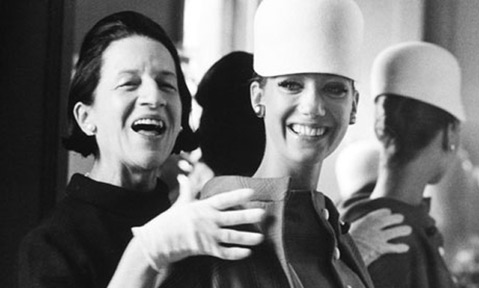Diana Vreeland: The Eye Has to Travel
A film directed by Lisa Immordino Vreeland.

For anyone with even a casual awareness of fashion’s culture and evolution over the past 50-plus years, the name Diana Vreeland represents one of the iconic figures, looming large in the 20th century. For others, the Vreeland influence, as head of Harper’s Bazaar and Vogue for years, is more vague: She’s a household name, sure, but more of an enigma beyond the grasp of our humble, unfashionable lives. For the former group, the gushing new documentary on Vreeland will come as a fleshing out of her life, work, and quips, while the latter bunch among us have a lot to learn from the film and may well come away with a greater understanding of her status as a submerged force of influence and a behind-the-scenes tastemaker.
That said, the documentary, however illuminating about the subject and the surrounding historical and cultural environments she passed through, doesn’t even aspire to objective cool in telling its subject’s tale. Here, Vreeland’s sweep of historical relevance is astonishing, from brushes with Buffalo Bill, a close encounter with Charles Lindbergh, and the discovery of models including Lauren Bacall to the way she helped shape the style sense of Jackie Kennedy and Twiggy. Sometimes the factuality of it all seems too much to believe; Vreeland was once asked if certain details of her bio were fact or fiction, to which she replied “faction.”
She was a storyteller, after all, using the magazine format as her stage and canvas. Thus, the challenge faced by filmmaker — and granddaughter-in-law — Lisa Immordino Vreeland was how to deal with the storyteller’s own story in a fresh and engaging way. She wisely opted to interweave television interviews and audio clips from Vreeland’s sessions with her memoirist George Plimpton with artfully well-placed film clips and visual asides. A Zelig-like scenester, at the right places at the right times, Vreeland relished the eras of liberation and libation, from the jazz age in the ’20s to the “youthquake” of the ’60s. No cloistered fashion-world prude, Vreeland “understood the beauty of vulgarity.”
One of the many well-known interviewees consulted for the film, Lauren Hutton, gets it about right when she calls Vreeland “an upside-down original.” And her sense of originality seeped into the public consciousness, more than it knows.



